GATE-2023
XL: Life Sciences
General Aptitude
Q.1 – Q.5 Carry ONE mark each.
1. The village was nestled in a green spot, _______ the ocean and the hills.
(A) through
(B) in
(C) at
(D) between
2. Disagree : Protest : : Agree : _______
(By word meaning)
(A) Refuse
(B) Pretext
(C) Recommend
(D) Refute
3. A ‘frabjous’ number is defined as a 3 digit number with all digits odd, and no two adjacent digits being the same. For example, 137 is a frabjous number, while 133 is not. How many such frabjous numbers exist?
(A) 125
(B) 720
(C) 60
(D) 80
4. Which one among the following statements must be TRUE about the mean and the median of the scores of all candidates appearing for GATE 2023?
(A) The median is at least as large as the mean.
(B) The mean is at least as large as the median.
(C) At most half the candidates have a score that is larger than the median.
(D) At most half the candidates have a score that is larger than the mean.
5. In the given diagram, ovals are marked at different heights (h) of a hill. Which one of the following options P, Q, R, and S depicts the top view of the hill?
(A) P
(B) Q
(C) R
(D) S
Q.6 – Q.10 Carry TWO marks Each
6. Residency is a famous housing complex with many well-established individuals among its residents. A recent survey conducted among the residents of the complex revealed that all of those residents who are well established in their respective fields happen to be academicians. The survey also revealed that most of these academicians are authors of some best-selling books.
Based only on the information provided above, which one of the following statements can be logically inferred with certainty?
(A) Some residents of the complex who are well established in their fields are also authors of some best-selling books.
(B) All academicians residing in the complex are well established in their fields.
(C) Some authors of best-selling books are residents of the complex who are well established in their fields.
(D) Some academicians residing in the complex are well established in their fields.
7. Ankita has to climb 5 stairs starting at the ground, while respecting the following rules:
(1) At any stage, Ankita can move either one or two stairs up.
(2) At any stage, Ankita cannot move to a lower step.
Let F(N) denote the number of possible ways in which Ankita can reach the 𝑁𝑡ℎ stair. For example, F(1) = 1, F(2) = 2, F(3) = 3.
The value of F(5) is _______.
(A) 8
(B) 7
(C) 6
(D) 5
8. The information contained in DNA is used to synthesize proteins that are necessary for the functioning of life. DNA is composed of four nucleotides: Adenine (A), Thymine (T), Cytosine (C), and Guanine (G). The information contained in DNA can then be thought of as a sequence of these four nucleotides: A, T, C, and G. DNA has coding and non-coding regions. Coding regions—where the sequence of these nucleotides are read in groups of three to produce individual amino acids—constitute only about 2% of human DNA. For example, the triplet of nucleotides CCG codes for the amino acid glycine, while the triplet GGA codes for the amino acid proline. Multiple amino acids are then assembled to form a protein.
Based only on the information provided above, which of the following statements can be logically inferred with certainty?
(i) The majority of human DNA has no role in the synthesis of proteins.
(ii) The function of about 98% of human DNA is not understood.
(A) only (i)
(B) only (ii)
(C) both (i) and (ii)
(D) neither (i) nor (ii)
9. Which one of the given figures P, Q, R and S represents the graph of the following function?
f(x) = | |x + 2| − |x – 1| |
(A) P
(B) Q
(C) R
(D) S
10. An opaque cylinder (shown below) is suspended in the path of a parallel beam of light, such that its shadow is cast on a screen oriented perpendicular to the direction of the light beam. The cylinder can be reoriented in any direction within the light beam. Under these conditions, which one of the shadows P, Q, R, and S is NOT possible?
(A) P
(B) Q
(C) R
(D) S
Chemistry – P (Compulsory)
XL-P: Q.11 – Q.19 Carry ONE mark Each
11. Which one among the following mixtures gives a buffer solution in water?
(A) CH3COOH + CH3COONa
(B) CH3COOH + NaCl
(C) NaOH + NaCl
(D) NaOH + CH3COONa
12. What is the major product formed in the given reaction?
13. The CORRECT order of stability of the given metal oxides is
(A) LiO2 > NaO2 > KO2 > RbO2
(B) LiO2 < NaO2 < KO2 < RbO2
(C) LiO2 < NaO2 > KO2 > RbO2
(D) LiO2 > NaO2 < KO2 < RbO2
14. Which of the following is/are CORRECT when two single complementary strands of DNA come together to form a double helix at a given temperature?
(ΔS and ΔH are changes in entropy and enthalpy of the process, respectively.)
(A) ΔS > 0
(B) ΔS < 0
(C) ΔH > 0
(D) ΔH < 0
15. Suitable reagent(s) to bring about the conversion of P to Q in good yield is/are
16. Choose the CORRECT trend(s) of the first ionization energies among the following.
(Given: Atomic numbers C: 6; N: 7; O: 8; F: 9; Si: 14; P: 15; S: 16; Cl: 17)
(A) C < N > O < F
(B) Si < P > S < Cl
(C) C < N < O < F
(D) Si < P < S < Cl
17. The depression of freezing point of water (in K) for 0.1 molal solutions of NaCl and Na2SO4 are ΔT1 and ΔT2, respectively. Assuming the solutions to be ideal, the ratio ΔT1⁄ΔT2 is _____________ (rounded off to two decimal places).
18. Considering cyclobutane to be planar, the number of planes of symmetry in the following compound is ___________ (in integer).
19. The dipole moment (μ) of BrF is 1.42 D and the bond length is 176 pm. The atomic charge distribution (q) in the molecule is _____ (rounded off to two decimal places). (Given: 1 D = 3.34 × 10−30 C m; the factor e (electronic charge) = 1.60 × 10−19 C)
XL-P: Q.20 – Q.27 Carry TWO marks Each
20. Consider two different paths in which the volume of an ideal gas doubles isothermally:
(i) Reversible expansion (work done = wrev)
(ii) Irreversible expansion, with the external pressure equal to the final pressure of the gas (work done = wirrev)
21. A mixture of four peptides, PKKRK, RGERV, RYRGV and LVVYP, is loaded onto an ion-exchange column at pH = 7.2. If carboxymethyl (CM) cellulose is used as the stationary phase of this column, then which peptide elutes first?
(A) PKKRK
(B) RGERV
(C) RYRGV
(D) LVVYP
22. Match the coordination complexes given in Column I with the most appropriate properties in Column II.
(Given: Atomic numbers of Mn: 25; Co: 27; Ni: 28)
(A) E-1, F-2, G-3, H-4
(B) E-2, F-1, G-4, H-3
(C) E-4, F-2, G-1, H-3
(D) E-1, F-4, G-3, H-2
23. Compounds P and Q undergo E2 elimination with reaction rate constants of k1 and k2, respectively, as shown below. Which is/are the CORRECT option(s)?
(A) k1 > k2
(B) k2 > k1
(C) Most stable conformer of P gives the product
(D) Most stable conformer of Q gives the product
24. According to Hard-Soft Acid-Base (HSAB) principle, the CORRECT option(s) for the solubility trend in water is/are
(A) AgF > AgCl > AgBr > AgI
(B) LiBr > LiCl > LiF
(C) AgF < AgCl < AgBr < AgI
(D) LiBr < LiCl < LiF
25. Compound X gives alcohol P as the major product for the reaction shown below. Suitable option(s) for X is/are
26. The number of radial node(s) for the valence orbital of U(III) ion is _____ (in integer).
(Given: Atomic number of U is 92)
27. Eº = 1.10 V for the following cell reaction:
Zn(s) + Cu2+(aq) ⇌ Zn2+(aq) + Cu(s)
For this reaction, the equilibrium constant is y × 1037 at 298 K. The value of y is _____ (rounded off to two decimal places).
(Given : F = 96485 C mol−1, R = 8.314 J K−1 mol−1)
Biochemistry (XL-Q)
XL-Q: Q.28 – Q.35 Carry ONE mark Each
28. Determine the correctness or otherwise of the following Assertion [a] and the Reason [r].
Assertion [a]: On a per carbon basis, palmitic acid yields more ATP than glucose.
Reason [r]: Carbons in palmitic acid are more reduced than those in glucose.
(A) Both [a] and [r] are true and [r] is the correct reason for [a]
(B) Both [a] and [r] are true but [r] is not the correct reason for [a]
(C) [a] is true but [r] is false
(D) [a] is false but [r] is true
29. When cell components are fractionated by sedimentation, the correct order (from lower to higher gravitational force, g) in which the components get separated is _______.
(A) nuclei, mitochondria, microsomes, and ribosomes
(B) microsomes, mitochondria, ribosomes, and nuclei
(C) nuclei, ribosomes, mitochondria, and microsomes
(D) ribosomes, microsomes, mitochondria, and nuclei
30. In a population, the probability of a susceptible individual getting infected with SARS-CoV-2 is low when a majority of individuals in the population becomes immune to this virus. This phenomenon is known as _______.
(A) innate immunity
(B) adaptive immunity
(C) active immunity
(D) herd immunity
31. Given below are four reactions of the glycolytic pathway catalyzed by the enzymes E1, E2, E3, and E4, as indicated. Which of these enzymes is/are NOT part of the gluconeogenesis pathway?
(A) E1
(B) E2
(C) E3
(D) E4
32. Which of the following molecules is/are second messenger(s) produced by the phosphoinositide signaling cascade?
(A) Phosphatidylinositol 4,5-bisphosphate
(B) Inositol 1,4,5-triphosphate
(C) Inositol 1,3,5-triphosphate
(D) Diacylglycerol
33. A protein has seven cysteine residues. The maximum number of disulfide bonds of different combinations that can possibly be formed by these seven cysteine residues is _______ (in integer).
34. A lyophilized sample of 20 nanomoles of an oligonucleotide is dissolved in water and the volume of the solution is made up to 200 μ The concentration (in μM) of the oligonucleotide in this solution is ______ (in integer).
35. DNA in a 1 cm long chromatin contains 5 × 109 base pairs. The fold compaction of this DNA within the chromatin is _______ (in integer).
XL-Q: Q.36 – Q.46 Carry TWO marks Each
36. Intracellular concentrations of ATP, ADP, and inorganic phosphate in four cell types are given below. Which one of these cell types has the most negative ΔG for ATP hydrolysis?
(A) L
(B) K
(C) B
(D) M
37. Which one of the following amino acids has more than two acid-base groups?
(A) Alanine
(B) Leucine
(C) Phenylalamine
(D) Tyrosine
38. Enzyme activity profiles as a function of time in the absence or presence of different types of feedback mechanisms are shown in the figure below. Match the following feedback mechanisms with the corresponding profiles in the figure.
(p) No feedback mechanism
(q) Negative feedback mechanism with short delay
(r) Negative feedback mechanism with long delay
(s) Positive feedback mechanism
(A) (p) – (i); (q) – (ii); (r) – (iii); (s) – (iv)
(B) (p) – (iv); (q) – (iii); (r) – (ii); (s) – (i)
(C) (p) – (iv); (q) – (ii); (r) – (iii); (s) – (i)
(D) (p) – (i); (q) – (iii); (r) – (ii); (s) – (iv)
39. A linear DNA fragment of 5 kilobase (kb) when completely digested with EcoRI produces 2.5 kb, 1.5 kb, and 1 kb fragments. Complete digestion of the same 5 kb fragment with XbaI produces 3.5 kb and 1.5 kb fragments. Which one of the following sets of fragments will be obtained if the 5 kb fragment is fully digested with EcoRI and XbaI simultaneously?
(A) 3 kb and 2 kb
(B) 2 kb and 1 kb
(C) 2 kb, 1.5 kb, 1 kb, and 0.5 kb
(D) 2.5 kb, 1.5 kb, 0.75 kb, and 0.25 kb
40. Match the cell types listed in Group I with associated processes listed in Group II.
(A) (p) – (ii); (q) – (i); (r) – (iii); (s) – (iv)
(B) (p) – (ii); (q) – (i); (r) – (iv); (s) – (iii)
(C) (p) – (iii); (q) – (i); (r) – (iv); (s) – (ii)
(D) (p) – (iii); (q) – (ii); (r) – (i); (s) – (iv)
41. Four statements about lipids are given below as options. Choose the statement(s) which is/are CORRECT.
(A) Cholesterol is amphipathic
(B) Self-assembly of phospholipids in water is due to hydrophobic effect
(C) The temperature at which the gel phase changes to liquid crystalline phase increases with an increase in the degree of unsaturation of fatty acyl tails
(D) The choline head group of lipids is positively charged
42. Which of the following technique(s) can be used to separate proteins according to their molecular weights from a mixture of proteins?
(A) Ion exchange chromatography
(B) Size exclusion chromatography
(C) Sodium dodecylsulfate – polyacrylamide gel electrophoresis (SDS-PAGE)
(D) Sucrose density gradient centrifugation
43. B cells produce two forms of an immunoglobulin: (i) membrane-bound form, known as B cell receptor (BCR) and (ii) soluble form, known as antibody. Which of the following statements is/are CORRECT about BCR and antibody produced by the same B cell?
(A) BCR and antibody have identical antigen binding site
(B) BCR and antibody recognize different epitopes
(C) BCR and antibody are encoded by the same gene
(D) BCR and antibody are formed by differential splicing
44. A 100 ml solution of pH 10 was well-mixed with a 100 ml solution of pH 4. The pH of the resultant 200 ml solution is ___________ (rounded off to two decimal places).
45. An organism uses only the glycerophosphate shunt pathway to transport cytosolic NADH to mitochondria. For every two electrons transported, complex I, complex III, and complex IV of the electron transport chain in this organism transport 2.5, 1.5, and 2.0 protons (H+), respectively. The H+ to ATP ratio of FOF1-ATPase of this organism is 4.0. Terminal electron acceptor is oxygen.
The number of ATP molecules synthesized by oxidizing NADH from glycolysis is __________ (rounded off to two decimal places).
46. If the extracellular concentration of sodium ion (Na+) is ten times more than its intracellular concentration, then the sodium equilibrium potential at 20 ºC in mV is ________________ (rounded off to two decimal places). Assume that the membrane is permeable only to Na+ [Use R = 1.987 cal deg−1 mol−1 and F = 23062 cal mol−1 V−1]
Botany (XL-R)
XL-R: Q.47 – Q.54 Carry ONE mark Each
47. Which one of the following statements on Casparian strips is correct?
(A) Casparian strips are specific to vascular plants found in epidermal cells.
(B) Casparian strips are modifications mostly found in shoot tissue.
(C) Casparian strips act as a cellular barrier to allow selective nutrient uptake and exclusion of pathogens.
(D) Casparian strips are common in root endodermal cells of non-vascular plants.
48. Rotenone is a chemical often used to kill insect pests on crop plants and fishes in lakes. Rotenone acts by inhibiting electron transport from the NADH dehydrogenase enzyme in Complex I to ubiquinone in the mitochondrial electron transport chain. Which one of the following explains why plants can tolerate rotenone application?
(A) The Complex I in plants is resistant to rotenone.
(B) Plants inactivate rotenone by enzymatic degradation.
(C) Plants have specific channels that efflux rotenone out of the cell.
(D) Plants have additional NAD(P)H dehydrogenases that are resistant to rotenone.
49. Although Pseudomonas syringae infection in plants is actively inhibited by the endogenous salicylic acid (SA) of host origin, a successful infection is still established because the bacterium secretes coronatine, an effector molecule. Which one of the following best describes the mode of action of coronatine?
(A) Coronatine inhibits SA biosynthesis.
(B) Coronatine promotes the biosynthesis of jasmonic acid (JA), and JA signaling in turn inhibits SA response.
(C) Coronatine is a structural analogue of SA, which binds to the SA receptor and inhibits its function.
(D) Coronatine is a structural analogue of jasmonic acid (JA), which activates JA signaling to inhibit SA response.
50. The schematic depicts an unexpanded plant cell within a hypocotyl with the arrangement of cellulose microfibrils marked on its cell wall.
Which one of the following shapes would most likely result from the expansion of this cell if the pattern of the cellulose fibrils does not change?
51. Which one or more of the following statements is/are NOT CORRECT with respect to pollen development in angiosperm?
(A) Tapetal cell wall in all angiosperms breaks down to release the cytoplasmic content.
(B) Tapetal cell wall in all angiosperms remains intact.
(C) Tapetal cell wall breaks down in some angiosperm species, whereas it remains intact in others.
(D) Within an angiosperm species, the tapetal cell wall breaks down in some individuals and not in others.
52. Regulation of phosphoenolpyruvate carboxylase (PEPCase) governs CO2 fixation in both C4 and CAM (crassulacean acid metabolism) plants. Which one or more of the following statements with respect to PEPCase activity is/are CORRECT?
(A) PEPCase in C4 plants is inactivated by dephosphorylation during the day.
(B) PEPCase in CAM plants is inactivated by dephosphorylation during the day.
(C) PEPCase in C4 plants is inactivated by dephosphorylation at night.
(D) PEPCase in CAM plants is inactivated by dephosphorylation at night.
53. Which one or more processes listed below DOES NOT/DO NOT produce carbon dioxide during fermentation?
(A) Brewing wine using yeast.
(B) Baking bread using yeast.
(C) Making yogurt using lactobacillus.
(D) Making cheese using fungus.
54. The ovule of a diploid species with 2n = 8 undergoes double fertilization. If the pollen is contributed by an individual with meiotic nondisjunction, the chromosome number of the zygote will be _________.
XL-R: Q.55 – Q.65 Carry TWO marks Each
55. Match the tasks given in Group I with the associated techniques conventionally used as listed in Group II.
(A) P-2; Q-1; R-3; S-4; T-5
(B) P-3; Q-4; R-1; S-2; T-5
(C) P-5; Q-4; R-1; S-2; T-3
(D) P-3; Q-5; R-1; S-2; T-4
56. Periderm is a protective tissue found in stems and roots of gymnosperm and woody dicotyledons. It contributes to the increased thickness by secondary growth. Match the peridermal components given in Group I with the cell/tissue types given in Group II.
(A) P-4; Q-3; R-1; S-2
(B) P-3; Q-2; R-4; S-1
(C) P-2; Q-1; R-3; S-4
(D) P-4; Q-1; R-3; S-2
57. Match the following rice diseases in Group I with their causal agents in Group II.
(A) P-5; Q-3; R-2; S-1
(B) P-4; Q-2; R-5; S-3
(C) P-4; Q-5; R-3; S-1
(D) P-5; Q-4; R-1; S-2
58. Central vascular cylinder or stele consists of the primary vascular system (xylem and phloem) and the associate fundamental tissue. Match the schematics of stele in Group I (xylem shown in green, and phloem shown as ) with their respective types in Group II.
(A) P-2; Q-4; R-1; S-3
(B) P-5; Q-1; R-4; S-2
(C) P-5; Q-3; R-1; S-2
(D) P-3; Q-4; R-2; S-5
59. Consider the following four experimental observations (i, ii, iii, iv) on the effect of the FT gene on flowering transition in the shoot apical meristem (SAM) of Arabidopsis thaliana.
(i) The FT promoter is active in leaves alone.
(ii) The ft null mutation causes delayed flowering transition of the SAM.
(iii) Expressing a recombinant FT protein fused to nuclear localization signal sequence under the endogenous promoter does not rescue the delayed-flowering phenotype of the ft null mutant.
(iv) Downregulation of FT transcript in the SAM by RNA interference in the wild-type background does not alter flowering transition.
Which one of the following conclusions best explains the above observations?
(A) FT protein resident in leaves causes flowering transition of the SAM.
(B) FT transcript moves from leaves to the meristem and promotes flowering.
(C) FT protein moves from leaves to the SAM and promotes flowering.
(D) Both FT transcript and FT protein are required in the SAM to promote flowering.
60. Which one of the options given correctly matches the alkaloids in Group I with their source plants in Group II?
(A) P-3; Q-1; R-4; S-2
(B) P-1; Q-3; R-4; S-2
(C) P-2; Q-1; R-3; S-4
(D) P-4; Q-2; R-1; S-3
61. A drought tolerant rice genotype was found to be associated with a missense mutation in the gene A. Which one or more of the following experiments is/are appropriate to validate whether the mutation in A is the causal factor for drought tolerance?
(A) Introduce the same mutation in a drought sensitive rice genotype and test if it becomes drought tolerant.
(B) Delete the wild-type A in drought sensitive plant and test if it becomes drought tolerant.
(C) Determine the stability of the protein encoded by the wild-type and the mutant forms of A.
(D) Repair the mutation in the drought tolerant rice genotype and test if it becomes drought sensitive.
62. Blue light can directly induce opening of stomata. Blue light also triggers photosynthesis in the guard cells, which indirectly induces stomatal opening. Which one or more of the following experimental approaches would test the direct effect of blue light on stomatal opening?
(A) Application of low photon fluxes of red light followed by high fluence rate of blue light.
(B) Application of high fluence rates of red light followed by low photon fluxes of blue light.
(C) Application of high fluence rates of blue light followed by high photon fluxes of red light.
(D) Inhibition of photosynthetic electron transport by dichlorophenyldimethylurea (DCMU).
63. In a diploid angiosperm species, flower colour is regulated by the R gene. RR and Rr genotypes produce red flowers, whereas the rr genotype produces white flowers. If two individual plants are randomly selected from a large segregating population of a genetic cross between RR and rr parents, the probability of both the plants producing red flowers is _______.
(Rounded off to two decimal places)
64. A cytoplasmic male-sterile female plant with the restorer (nuclear) genotype rr is crossed to a male-fertile male plant with the genotype RR. Both RR and Rr can restore the fertility, whereas rr cannot. When an F1 female plant with Rr genotype was test-crossed to a male-fertile male plant with the rr genotype, the percentage of the population that is male fertile would be _______ %. (Answer in integer)
65. The frequencies for autosomal alleles A and a are p = 0.5 and q = 0.5, respectively, where A is dominant over a. Under the assumption of random mating, the mating frequency among dominant parents is _________. (Rounded off to two decimal places)
Microbiology (XL-S)
XL-S: Q.66 – Q.73 Carry ONE mark each
66. Monkey pox is caused by a
(A) double-stranded DNA virus
(B) single-stranded DNA virus
(C) double-stranded RNA virus
(D) single-stranded RNA virus
67. Which one of the following converts sulfate to hydrogen sulfide?
(A) Beggiatoa
(B) Desulfovibrio
(C) Thiobacillus
(D) Thiothrix
68. Which one of the statements about bacterial flagella is correct?
(A) Flagella varies in length ranging from 0.5 to 2 μm.
(B) Flagella are adjacent fibrils with regular patterns.
(C) Flagella helps in conjugation.
(D) Flagella originates from basal body.
69. Microbial plastics are made from
(A) polyhydroxyalkanoates
(B) polystyrene
(C) polyurethane
(D) polyvinyl chloride
70. The correct sequence of metabolic intermediates in Krebs cycle is
(A) α-ketoglutarate → fumarate → succinate → malate
(B) fumarate → malate → succinate → α-ketoglutarate
(C) α-ketoglutarate → succinate → fumarate → malate
(D) succinate → α-ketoglutarate → malate → fumarate
71. Catabolite repression in bacteria is regulated by the concentration of
(A) amino acids
(B) glucose
(C) messenger RNA
(D) lactose
72. Phagocytosis was first described by
(A) Elie Metchnikoff
(B) Robert Hooke
(C) Robert Koch
(D) Paul Ehrlich
73. Which one of the following statements about batch culture of microbes is NOT correct?
(A) Cells from stationary phase will show longer lag phase when inoculated in fresh growth medium compared to those collected from exponential phase.
(B) Death phase of culture is often exponential in nature.
(C) Stationary phase is the cryptic growth phase.
(D) The rate of generation of new cells during exponential growth phase is constant.
XL-S: Q.74 – Q.84 Carry TWO marks each
74. Match the test in Group I with its application in Group II
(A) P-2, Q-3, R-4, S-1
(B) P-2, Q-1, R-4, S-3
(C) P-3, Q-1, R-2, S-4
(D) P-4, Q-3, R-2, S-1
75. Which one of the following is NOT correct about antibiotic resistance mechanism in microbes?
(A) Mycoplasma is naturally resistant to penicillins due to presence of R plasmid.
(B) Gram-negative bacteria are impermeable to penicillin G.
(C) β-lactamases of bacteria can cleave penicillins.
(D) Selective microbes can efflux penicillins entering the cell and develop resistance.
76. A suspension of photosynthetic green algae was illuminated in the presence of 14CO2 for few seconds. The first metabolite in the Calvin cycle to be radiolabeled will be
(A) glyceraldehyde
(B) 1, 3-bisphosphoglycerate
(C) 3-phosphoglycerate
(D) ribulose 1,5-bisphosphate
77. Determine the correctness or otherwise of the following Assertion [a] and the Reason [r].
Assertion [a]: Endospore can survive heat that would rapidly kill vegetative cells of the same species.
Reason [r]: In endospore, the protoplasm is reduced to minimum volume as a result of the accumulation of calcium-dipicolinic acid complexes and small acid-soluble spore proteins, which forms a cytoplasmic gel and a thick cortex.
(A) Both [a] and [r] are true and [r] is the correct reason for [a]
(B) Both [a] and [r] are true and [r] is not the correct reason for [a]
(C) Both [a] and [r] are false
(D) [a] is true but [r] is false
78. Which one of the following conjugations will result in formation of merodiploids?
(A) F+ donor × F− recipient
(B) Hfr donor × F− recipient
(C) F’ donor × F− recipient
(D) F+ donor × Hfr recipient
79. Which of the following genus is/are a spirochete(s)?
(A) Borrelia
(B) Leptospira
(C) Spirulina
(D) Treponema
80. Which of the following is/are non-membrane bound inclusion bodies?
(A) Carboxysomes
(B) Cyanophycin granules
(C) Poly-β-hydroxybutyrate granules
(D) Polyphosphate granules
81. Which of the following antibiotics is/are isolated from Streptomyces spp.?
(A) Gentamicin
(B) Nystatin
(C) Polymyxins
(D) Tetracyclines
82. Which of the following statements about the primary and secondary adaptive immune responses to an antigen is/are correct?
(A) IgM antibodies appear first in response to the initial exposure of the antigen.
(B) Majority of the antibodies produced in response to the second exposure of the same antigen are IgM isotype.
(C) Second exposure of the same antigen stimulates production of memory cells.
(D) Primary antibody response has shorter lag phase than secondary antibody response.
83. The spontaneous, and induced mutations in bacteria can be distinguished by
(A) fluctuation test
(B) replica plating
(C) disc diffusion test
(D) use-dilution test
84. During the exponential growth, it took 6 hours for the population of bacterial cells to increase from 2.5 × 106 to 5 × 108. The generation time of the bacterium, rounded off to the nearest integer, is ________ minutes.
Zoology (XL-T)
XL-T: Q.85 – Q.92 Carry ONE mark Each
85. Which one of the following animals has “Book Lungs” as a respiratory organ?
(A) Earthworm
(B) Scorpion
(C) Octopus
(D) Starfish
86. Which one of the following describes the “innate behavior” of an animal?
(A) A behavior that is triggered due to the change in environment.
(B) A behavior that is trained by the parents.
(C) A behavior that is determined by heredity.
(D) A behavior that is learnt by “hit and trial” approach.
87. Which one of the following represents a true “Ecological population” ?
(A) A pitcher plant and a trapped fly in it
(B) All animals that live near each other in a national park
(C) The leeches and the flatworms that live in a forest
(D) All the lions in a reserve forest
88. Which of the following animals show “Bottle cells” during the gastrulation stage of development?
(A) Snails
(B) Amphibians
(C) Birds
(D) Mammals
89. The organisms that obtain energy from inorganic compounds are known as
(A) Autotrophs
(B) Organotrophs
(C) Lithotrophs
(D) Phototrophs
90. Which of the following is/are the causative agent(s) of Filariasis?
(A) Wuchereria bancrofti
(B) Leishmania donovani
(C) Brugia malayi
(D) Trypanosoma gambiense
91. In a population of 1000 wild dogs in a grassland, 360 and 480 dogs had black body colour with genotypes BB and Bb, respectively. In the same population, remaining dogs were white in colour with a genotype of bb. Based on this data, the frequency of allele “b” in the population is ______ (round off to one decimal place).
92. A mature rat sperm cell has 2.5 μg of genomic DNA that is equivalent of a haploid genome. Compared to this sperm cell, the amount of genomic DNA (in μg) in a somatic cell, which is in the G2 phase of cell cycle, will be _____ (in integer).
XL-T: Q.93 – Q.103 Carry TWO marks Each
93. In an experiment, excess amount of bicod mRNA (more than wild-type expression level) was injected into the posterior pole of a wild-type Drosophila embryo at pre-blastodermal stage. Out of the following options, which one represents the best expected phenotype in the resulted developing embryo?
(A) Normal embryo with head structure at anterior and tail structure at posterior pole
(B) Head structure only at posterior pole of the embryo
(C) Tail structure at anterior and head structure at posterior poles of the embryo
(D) Head structure at both anterior and posterior poles of the embryo
94. Match the hormones/precursors listed in Column I with their chemical type in Column II and the tissue of origin listed in Column III
(A) P – (ii) – d ; Q – (iii) – c ; R – (iv) – a ; S – (i) – b
(B) P – (ii) – d ; Q – (iv) – a ; R – (i) – c ; S – (iii) – b
(C) P – (i) – c ; Q – (ii) – b ; R – (iv) – d ; S – (iii) – a
(D) P – (iv) – a ; Q – (i) – d ; R – (ii) – b ; S – (iii) – c
95. Match the syndromes listed in Column I with the cause/symptoms listed in Column II
(A) P – (ii) ; Q – (v) ; R – (iv) ; S – (iii) ; T – (i)
(B) P – (iv) ; Q – (iii) ; R – (i) ; S – (ii) ; T – (v)
(C) P – (iii) ; Q – (iv) ; R – (i) ; S – (v) ; T – (ii)
(D) P – (v) ; Q – (iv) ; R – (ii) ; S – (i) ; T – (iii)
96. Match the immunological statements in Column I with the appropriate descriptions from Column II
(A) P – (ii) ; Q – (iii) ; R – (iv) ; S – (i)
(B) P – (iv) ; Q – (iii) ; R – (i) ; S – (ii)
(C) P – (iv) ; Q – (ii) ; R – (iii) ; S – (i)
(D) P – (i) ; Q – (iv) ; R – (iii) ; S – (ii)
97. Match the standard/stated cofactors in Column I with their respective enzymes in Column II
(A) P – (v) ; Q – (ii) ; R – (iv) ; S – (i) ; T– (iii)
(B) P – (ii) ; Q – (iv) ; R – (v) ; S – (iii) ; T – (i)
(C) P – (iv) ; Q – (ii) ; R – (iii) ; S – (i) ; T – (v)
(D) P – (ii) ; Q – (i) ; R – (iii) ; S – (iv) ; T – (v)
98. The presence of excess glucose has been known to prevent the induction of lac operon as well as other operon controlling enzymes involved in carbohydrate metabolism in E. coli. Which of the following processes define(s) the phenomenon?
(A) Catabolite repression
(B) Attenuation
(C) Glucose effect
(D) Feedback inhibition
99. Which of the following techniques is/are used for determining the three-dimensional structure of proteins?
(A) Cryo-electron Microscopy
(B) Circular Dichroism
(C) Nuclear Magnetic Resonance Spectroscopy
(D) X-ray Diffraction
100. Among the following statements, which is/are TRUE regarding the replication of DNA?
(A) Replication is bidirectional and conservative in nature.
(B) Replication in eukaryotes takes place at multiple Ori sites simultaneously.
(C) Both the strands replicate in discontinuous manner.
(D) One strand replicates in continuous while the other replicates in discontinuous manner.
101. Which of the following statements is/are TRUE for Colchicine?
(A) It binds to tubulin molecule and disrupts the assembly/polymerization of microtubule.
(B) It inhibits crossover of chromosomes during meiosis.
(C) It inhibits chromosome condensation during Prophase.
(D) It blocks mitotic cells in Metaphase.
102. Wild-type Drosophila females having three linked genes (AABBCC) were crossed with triple recessive mutant (aabbcc) males. The F1 female progenies (AaBbCc) were back crossed with the triple negative mutant (aabbcc) males. The cross resulted in following number of progenies in F2 :
The order of genes as determined from the above data was found to be “ABC” (note that the order is equivalent to “CBA” and the order outside the markers are arbitrary).
The recombination map distance (in centi Morgan) between “A to C” is ______ (round off to one decimal place).
103. The length of a double helical DNA molecule is 13.6 km. If the DNA double helix weighs 1 × 10−18 g per 1000 nucleotide pairs and rise per base pair is 3.4 Å, then weight of the double helical DNA molecule (in nanogram) will be ______ (in integer).
Food Technology (XL-U)
XL-U: Q.104 – Q.111 Carry ONE mark Each
104. Choose the correct group of fat soluble vitamins
(A) Cholecalciferol, α-Tocopherol, Menadione
(B) Thiamine, Cholecalciferol, α-Tocopherol
(C) Niacin, α-Tocopherol, Menadione
(D) Biotin, Thiamin, Niacin
105. The synthesis of thyroxine T4 in human body requires
(A) Selenium
(B) Iodine
(C) Iron
(D) Zinc
106. Which among the followings is NOT an essential amino acid?
(A) L-Phenylalanine
(B) L-Valine
(C) L-Lysine
(D) L-Arginine
107. The time required for stipulated destruction of a microbial population at a given temperature is
(A) D-value
(B) F-value
(C) z-value
(D) Q10 value
108. Which among the following statements is NOT correct?
(A) Cod fish is a major source of ω-3 fatty acids.
(B) Beetroot is a good source of β-carotene.
(C) Apple is a good source of vitamin B12.
(D) Fresh sugarcane juice is a good source of polyphenol oxidase.
109. Calculate the efficiency in percent (rounded off to 1 decimal place) of an oil expeller which yields 37 kg oil containing 5% solid impurities from 100 kg mustard seeds. The oil content of the mustard seed is 38%.
110. Orange juice is packaged aseptically and stored under ambient conditions. The degradation of vitamin C in the juice occurs during storage and it follows first order reaction kinetics. The degradation rate constant is 5.2 × 10−3 day−1. The half-life of vitamin C in days is ____________ (in integer).
111. The weight of 10 kg dried cauliflower containing 5% moisture (wet basis) after rehydration is 60 kg. If the fresh cauliflower contained 87% moisture (wet basis), calculate the coefficient of rehydration (rounded off to 2 decimal places).
XL-U: Q.112 – Q.122 Carry TWO marks Each
112. Some of the industrial products are produced by fermentation processes. Identify the correct pair of product and fermentative microorganism.
(A) Vinegar – Acetobacter aceti
(B) Citric acid – Enterbacter aerogenes
(C) Ethanol – Saccharomyces cerevisiae
(D) L-Lysine – Aspergillus niger
113. Choose the correct statement(s) about the enzyme and its application in food processing reaction.
(A) Chymosin is widely used in cheese manufacturing.
(B) Thermolysin is used in the synthesis of Aspartame.
(C) β-Galactosidase catalyzes the hydrolysis of galactose.
(D) Lipase is used for restructuring of acyl glycerol.
114. Identify the Gram +ve bacteria responsible for causing food borne diseases among the followings
(A) Campylobacter jejuni
(B) Clostridium botulinum
(C) Vibrio cholerae
(D) Salmonella typhi
115. Extrusion cooking is accomplished in four different stages, which are indicated as I, II, III and IV in the figure given below. Choose the correct option representing the name of each stage.
(A) I – Feeding, II – Cooking, III – Kneading, IV – Expansion
(B) I – Kneading, II – Feeding, III – Cooking, IV – Expansion
(C) I – Feeding, II – Kneading, III – Cooking, IV – Expansion
(D) I – Cooking, II – Kneading, III – Feeding, IV – Expansion
116. Match the method/ value used for measuring lipid characteristics in Column I with the corresponding properties indicated by them, in Column II.
(A) P-3, Q-1, R-4, S-2
(B) P-1, Q-3, R-4, S-2
(C) P-3, Q-1, R-2, S-4
(D) P-3, Q-4, R-1, S-2
117. Match the peeling technique in Column I with the vegetable, for which it is used in industry, given in Column II.
(A) P-3, Q-4, R-1, S-2
(B) P-4, Q-1, R-3, S-2
(C) P-4, Q-3, R-2, S-1
(D) P-4, Q-3, R-1, S-2
118. Match the process in Column I with the related food component in Column II.
(A) P-2, Q-4, R-1, S-3
(B) P-2, Q-1, R-4, S-3
(C) P-1, Q-3, R-2, S-4
(D) P-2, Q-1, R-3, S-4
119. Identify the correct statement(s) related to grain polysaccharides among the followings.
(A) Dextrin are a group of low molecular weight polysaccharides produced by dry hydrolysis of starch.
(B) Amylose is a linear polymer of D-glucose units joined by α (1→6) glycoside linkages.
(C) Amylopectin is a branched chain polymer of D-galactose monomer units.
(D) Retrogradation is a process of reassociation of amylose and formation of crystalline structure by gelatinized starch upon cooling.
120. A sample of glucose isomerase enzyme converts 15 μmoles of substrate glucose into product fructose min−1 mL−1 under standard assay conditions. The enzyme activity of the glucose isomerase in International Unit (IU) is _______ (in integer).
121. If D10 for Salmonella in egg yolk is 0.75 kGy, calculate the radiation dose in kGy (rounded off to 2 decimal places) required for reducing the Salmonella count in egg yolk by 8 log cycles.
122. The average moisture binding energy of a textured protein product (TPP) at 8% moisture content (dry basis) is 3200 cal.mol-1. If the water activity of the TPP at the above moisture content is 0.30 at 30℃, the water activity of the sample at 45℃ is __________ (rounded off to 2 decimal places). The value of Gas constant R = 1.987 cal.mol−1.K−1.


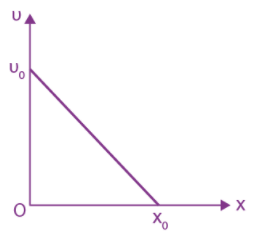
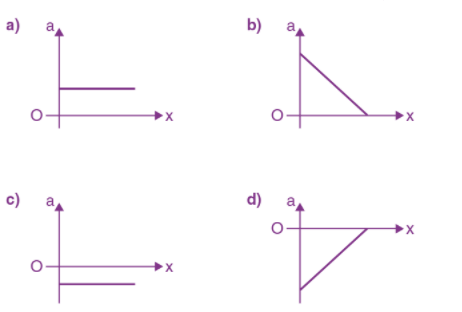

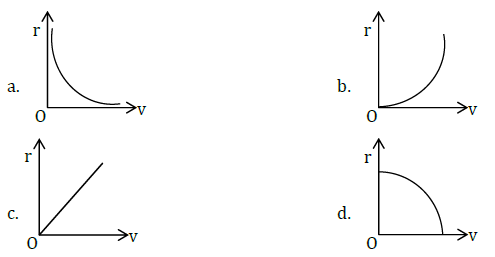


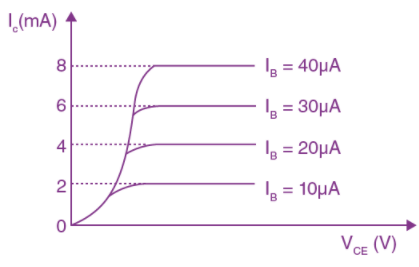








 is equal to:
is equal to:




 is equal to ________.
is equal to ________. α, β ∈ R, then α + β is equal to ________.
α, β ∈ R, then α + β is equal to ________. then the sum of all the coefficients of the polynomial P (x) is equal to ____________.
then the sum of all the coefficients of the polynomial P (x) is equal to ____________.

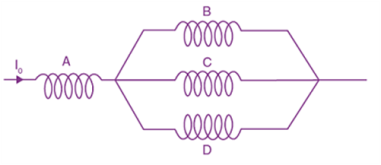
 The measured value of the length of the pendulum is 10 cm known to a 1 mm accuracy. The time for 200 oscillations of the pendulum is found to be 100 seconds using a clock of 1 s resolution. The percentage accuracy in the determination of ‘g’ using this pendulum is ‘x’. The value of ‘x’ to the nearest integer is.
The measured value of the length of the pendulum is 10 cm known to a 1 mm accuracy. The time for 200 oscillations of the pendulum is found to be 100 seconds using a clock of 1 s resolution. The percentage accuracy in the determination of ‘g’ using this pendulum is ‘x’. The value of ‘x’ to the nearest integer is.
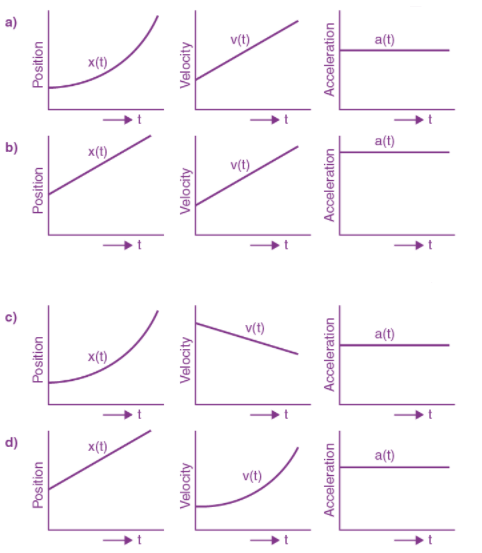


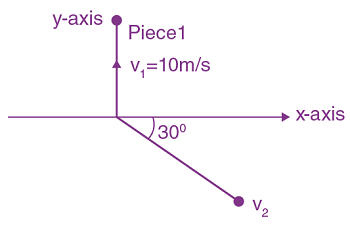





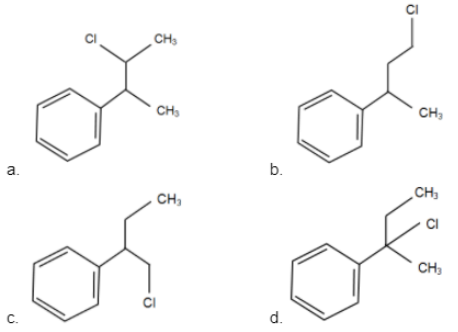

 (0 < x < π), are:
(0 < x < π), are: is differentiable at every point of the domain, then the values of a and b are respectively:
is differentiable at every point of the domain, then the values of a and b are respectively: is equal to:
is equal to: is equal to:
is equal to:


 where [x] denotes the greatest integer less than equal to x, is defined for all x belonging to:
where [x] denotes the greatest integer less than equal to x, is defined for all x belonging to: is equal to L, then the value of (6L + 1) is :
is equal to L, then the value of (6L + 1) is : and
and  If Tr(A) denotes the sum of all diagonal elements of the matrix A, then Tr(A) – Tr(B) has value equal to:
If Tr(A) denotes the sum of all diagonal elements of the matrix A, then Tr(A) – Tr(B) has value equal to: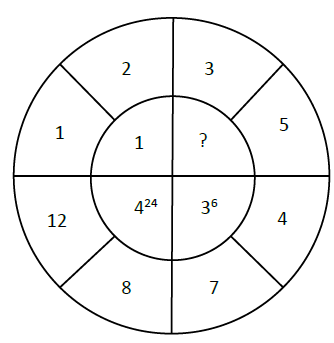
 f (0) = 0 and
f (0) = 0 and 








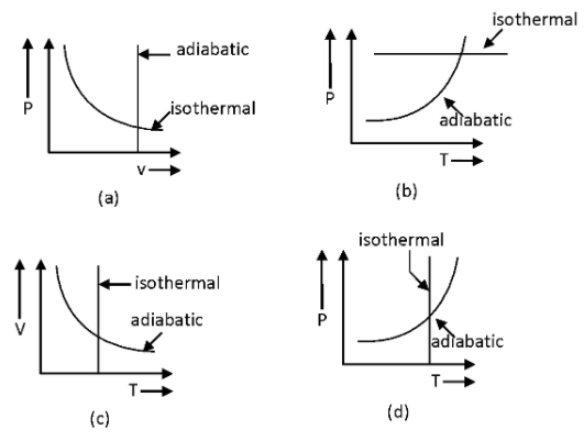

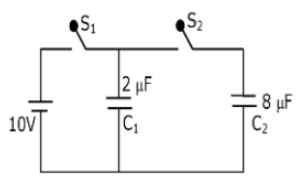

 Then the thickness of the oleic acid layer will be x × 10−14 m where x is _________.
Then the thickness of the oleic acid layer will be x × 10−14 m where x is _________.




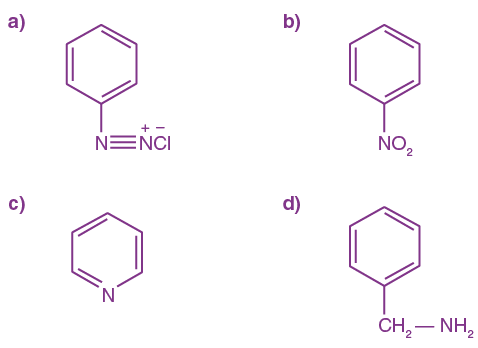

 Then f is
Then f is is zero, then the value of k2 is :
is zero, then the value of k2 is : where ɑ, β, γ are integers and [x] denotes the greatest integer less than or equal to x, then the value of ɑ + β + γ is equal to:
where ɑ, β, γ are integers and [x] denotes the greatest integer less than or equal to x, then the value of ɑ + β + γ is equal to:



 is equal to:
is equal to: is equal to:
is equal to: and [x] denotes the greatest integer less than or equal to x, is:
and [x] denotes the greatest integer less than or equal to x, is: be in the ratio 12:8:3. Then the term independent of x in the expansion is equal to ………
be in the ratio 12:8:3. Then the term independent of x in the expansion is equal to ……… such that AB = B and a + d = 2021, then the value of ad-bc is equal to …………….
such that AB = B and a + d = 2021, then the value of ad-bc is equal to …………….
 are in arithmetic progression for a real number x, then the value of the determinant
are in arithmetic progression for a real number x, then the value of the determinant  is equal to:
is equal to: is equal to
is equal to



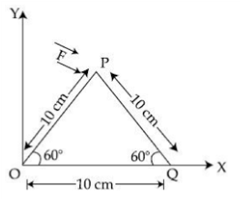









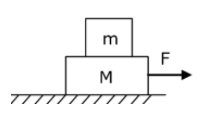
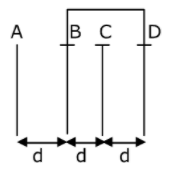


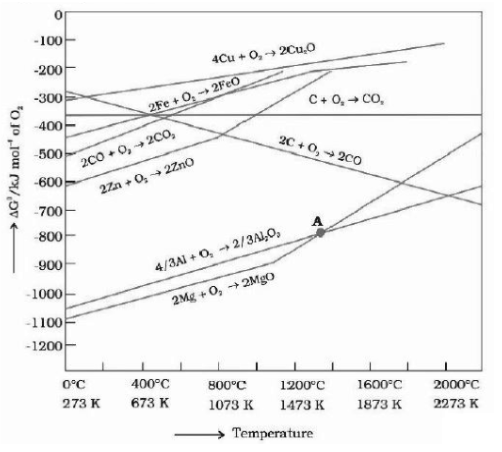

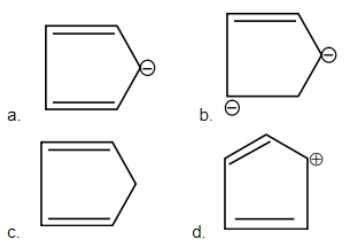

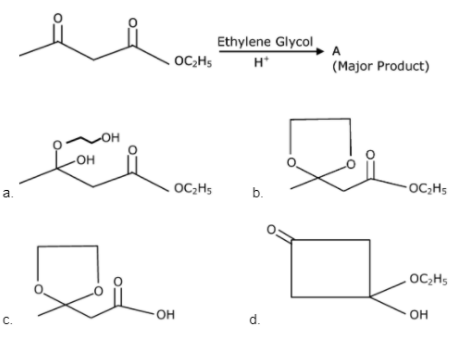
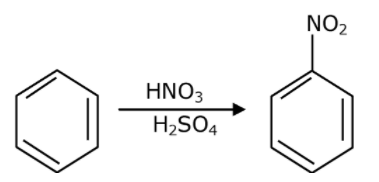
 is:
is: and
and  then a possible value of α is:
then a possible value of α is:
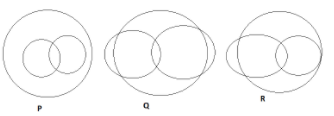
 then the value of det (A4) + det (A10 − Adj (2A))10) is equal to _______
then the value of det (A4) + det (A10 − Adj (2A))10) is equal to _______ is_______
is_______ and its first derivative with respect to x is
and its first derivative with respect to x is 







 A square loop of side d is placed with its edges along the x and y axes. The loop is moved with a constant velocity
A square loop of side d is placed with its edges along the x and y axes. The loop is moved with a constant velocity 




 is where x is ______(Round off to the Nearest Integer)
is where x is ______(Round off to the Nearest Integer)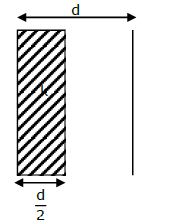





 is equal to:
is equal to: where [x] denotes the greatest integer less than or equal to x. Then the value of I is equal to:
where [x] denotes the greatest integer less than or equal to x. Then the value of I is equal to: is continuous at x = 0, where {x} = x – [x], [x] is the greatest integer less than or equal to x. Then:
is continuous at x = 0, where {x} = x – [x], [x] is the greatest integer less than or equal to x. Then: , x ∈ R is:
, x ∈ R is: If
If  where a, b are non-negative real numbers. If (gof) (x) is continuous for all x ∈ R, then a + b is equal to ______
where a, b are non-negative real numbers. If (gof) (x) is continuous for all x ∈ R, then a + b is equal to ______ then the value of |m| is equal to________
then the value of |m| is equal to________ be two 2 × 1 matrices with real entries such that A = XB, where
be two 2 × 1 matrices with real entries such that A = XB, where  and k ∈ If
and k ∈ If 













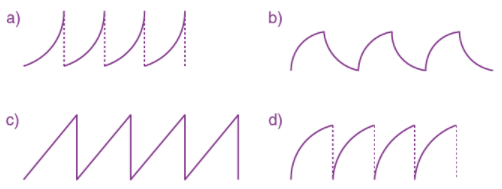












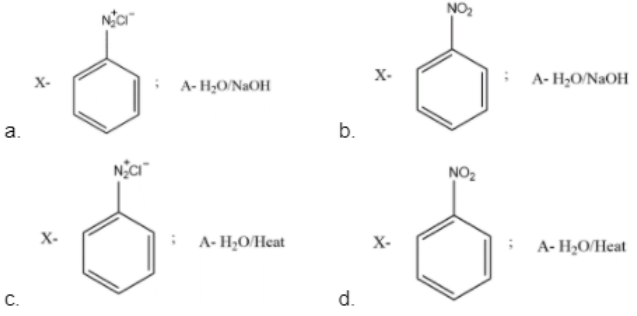





 x ≠ 2nπ, n ∈ N has critical points, is:
x ≠ 2nπ, n ∈ N has critical points, is: and
and 
 Then, the largest value of |z| is equal to ____
Then, the largest value of |z| is equal to ____ Then
Then  then the maximum value of the function y(x) over R is equal to :
then the maximum value of the function y(x) over R is equal to : Then, the system of linear equations
Then, the system of linear equations  has:
has: log10sin x + log10 cos x =−1 and
log10sin x + log10 cos x =−1 and  is:
is: then
then  is equal to:
is equal to: Then,
Then,  is equal to_______
is equal to_______ then the value of I1 + 2I2 is equal to______
then the value of I1 + 2I2 is equal to______ at a point (a, b) is parallel to the line x + 3y = – 5, a > 1, then the value of |a + 6b| is equal to ______
at a point (a, b) is parallel to the line x + 3y = – 5, a > 1, then the value of |a + 6b| is equal to ______ then a + b + c is equal to_______
then a + b + c is equal to_______ and Re (w) has a minimum value. Then, the minimum value of n ∈ N, for which wn is real, is equal to ____
and Re (w) has a minimum value. Then, the minimum value of n ∈ N, for which wn is real, is equal to ____ and
and  and I3 be the identity matrix of order 3. If the determinant of the matrix (P−1AP − I3)2 is ɑω2, then the value of ɑ is equal to _____
and I3 be the identity matrix of order 3. If the determinant of the matrix (P−1AP − I3)2 is ɑω2, then the value of ɑ is equal to _____









 g_collapse]
g_collapse]

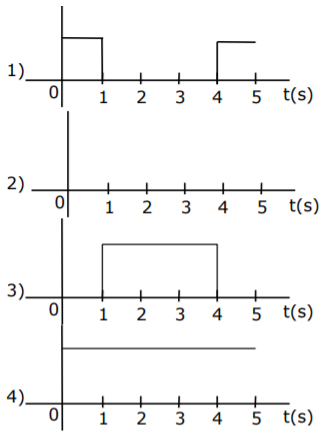




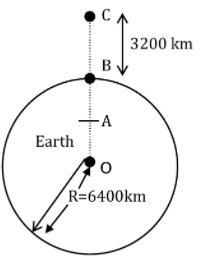






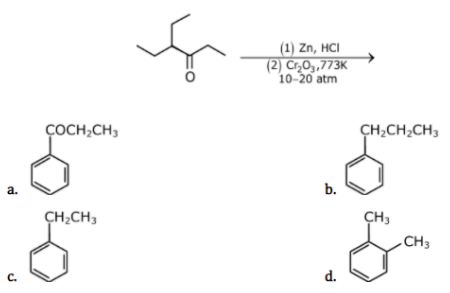
 is equal to:
is equal to: If the curve intersects the line x + 2y = 4 at x = −2, then the value of y, for which the point (3, y) lies on the curve, is:
If the curve intersects the line x + 2y = 4 at x = −2, then the value of y, for which the point (3, y) lies on the curve, is: is :
is :



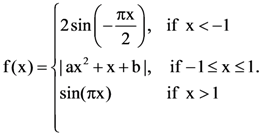 If f(x) is continuous on R, then a + b equals:
If f(x) is continuous on R, then a + b equals: Then the number of possible functions g : A → A such that gof = f is:
Then the number of possible functions g : A → A such that gof = f is: then α equals ______
then α equals ______ satisfies the equation
satisfies the equation  for some real numbers α and β, then β – α is equal to_______.
for some real numbers α and β, then β – α is equal to_______.
















 where x is the displacement, k is the Boltzmann constant and T is the temperature. If α and β are constants, dimensions of α will be:
where x is the displacement, k is the Boltzmann constant and T is the temperature. If α and β are constants, dimensions of α will be: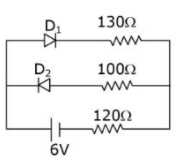
 ]
]





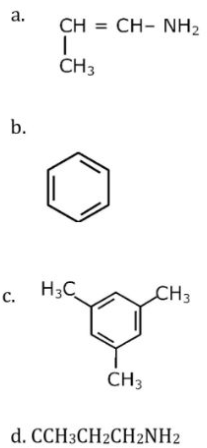



 where x ∈ (0, 1) is :
where x ∈ (0, 1) is :



 then
then  is equal to :
is equal to :
 is:
is: 0 < x < 1, then the value of
0 < x < 1, then the value of  is :
is :


 is:
is: is:
is:

 y(0) = 0; then
y(0) = 0; then  is equal to ________.
is equal to ________. is equal to______.
is equal to______. is _______.
is _______.